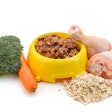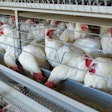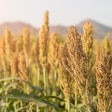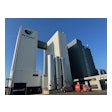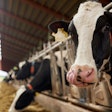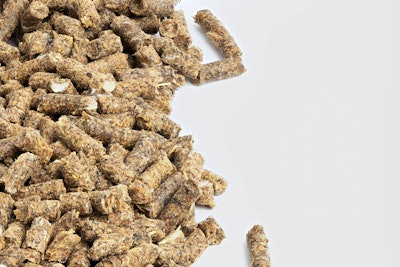
The North American animal feed industry is looking at a challenging year in 2023.
Supply chain issues have dogged the market for over a year now, with the ongoing conflict in Ukraine, railroad workforce disputes and low river levels creating additional layers.
The labor crisis – attracting qualified people and retaining them – continues to grow. And inflation will continue to impact the feed industry’s bottom line in 2023.
Feed & Grain asked the American Feed Industry Association (AFIA) and the National Grain and Feed Association (NGFA) what they saw as their top three challenges for the 2023 North American animal feed industry. Here’s what they had to say.
1. Ongoing supply chain crunch
The supply chain became turbulent during COVID and never fully righted itself before geopolitics, workforce shortages and disputes, and climate issues stepped in to create more challenges.
The animal feed industry dealt with a variety of grain transportation challenges in 2022, from congestion at ports to poor rail service. The rail industry, facing a labor squeeze, had a potential rail strike deadline looming at the time of this printing, which could be devastating for the grain industry.
The ongoing war in Ukraine also continued to impact supply chains, boosting corn and wheat prices. And low water levels on the Mississippi River brought barge traffic to a halt in October.
Constance Cullman, AFIA president and CEO: While we’ve made great gains over the past year in resolving supply chain issues at America’s ports, the U.S. animal food industry is continuing to navigate the global shift in grain and fertilizer supplies due to Russia’s invasion of Ukraine and higher energy costs, increasing pressure throughout the marketplace.
We expect that these issues will only exacerbate market volatility going into 2023, leading to a continued game of whack-a-mole.
AFIA is working with agriculture partners in quickly identifying and raising pain points so that they can be considered in President Biden’s whole-of-government approach to resolving America’s supply chains.
We also continue to implore the White House to come back to the negotiating table with key trading partners. As we’ve learned from the COVID-19 pandemic, a trade stoppage in one area can send ripple effects throughout the world, so we must diversify our ingredient sources and export markets now to keep our future supplies and customer base stable.
David Fairfield, NGFA senior vice president, Feed: Transportation remains a very significant challenge for the animal feed industry.
The lack of predictability for rail and truck transportation has caused issues for both shipping and receiving products.
Maintaining just-in-time inventories often is not an option anymore due to logistical issues, causing increased costs of inventory and the need for more inventory space.
2. Labor challenges intensify
The pandemic caused a major disruption in the North American labor force, the impact of which we’re still seeing today. Competition for qualified candidates is fierce and continues to fuel a worker shortage.
Cullman, AFIA: Going hand-in-hand with addressing our supply chain challenges is tackling the growing labor crisis.
Our members continue to tell us that finding qualified people to work in their manufacturing facilities is a problem, despite increased financial incentives.
Adding to that is the looming threat that the trucking industry will need to hire, on average, 110,000 new drivers annually over the next decade to keep pace with economic growth and attrition.
We continue to urge legislators and the administration to move sensible policies forward that reduce the barriers to entry and make U.S. agriculture an attractive industry in which to work.
For example, we recently supported a pilot program that would reduce the driving age from 21 to 18 for those operating commercial motor vehicles in interstate commerce.
Commonsense policies like this ensure we are meeting future workers where they are and providing them an on-ramp to a long career in an industry responsible for feeding the world.
Fairfield, NGFA: Labor challenges have not subsided, and the feed industry will continue to seek out ways to attract and retain employees in 2023.
This includes competitive wages and other appropriate financial incentives, as well as looking at ways to accommodate the desire for workplace flexibility.
3. Continuing global inflation
Slowing national economies in top markets point to the likelihood of a global recession.
The International Monetary Fund (IMF) stated in its October 2022 World Economic Outlook Report that the global economy will grow 3.2% by the end of the year, but forecasts only a 2.7% expansion in 2023.
The report went on to say that one-third of the world’s economies are technically already in a recession, defining this distinction by contractions spanning two consecutive quarters.
Global inflation is forecast to decrease to 6.5% in 2023 after hitting 8.8% at the end of 2022, says the IMF.
In the U.S., Goldman Sachs said it expects a "significant" decline in inflation in 2023 due to easing in supply chain constraints and slower wage growth.
The company also predicts the U.S. will stick a “soft landing” in 2023, narrowly avoiding a recession as inflation fades and unemployment nudges up slightly.
Cullman, AFIA: Rising inflation is hurting us all. Not only are Americans emptying their wallets to afford their weekly groceries, but the increasing costs of goods are unfortunately making it more expensive for us to manufacture animal food, driving up feed and pet food prices.
As of August, the consumer price index for all food stood 11.4% higher year-over-year and that number is expected to continue increasing between 2.5%-3.5% in 2023.
Our members recently heard from economists who said that rising inflation, along with geopolitical tension in Europe and arid weather unripe for crop production, will compel farmers and ranchers to reduce their animal numbers because of unavailability and high cost of feed, which could lead to global protein reductions.
At the AFIA, we are supportive of policies that promote the long-term economic health of the animal agriculture sector and raise awareness of how market manipulation only serves to exacerbate costs for all.
Fairfield, NGFA: High inflation has impacted the feed industry’s bottom line during 2022. Managing the cost of inputs and generating adequate revenue will be a high priority moving into 2023.
For nutritionists, the additional demand for ingredients from non-feed sectors is tightening supplies and raising prices. Establishing supply lines to a wide range of ingredients will be a key when attempting to formulate to nutritional specifications and minimize cost.
Animal feed industry outlook: the next 10 years
We asked Cullman and Fairfield to predict what the greatest challenge in the next decade will be for the animal feed industry. Regulations and sustainability top their lists.
Cullman, AFIA: Increased calls from Wall Street, the government and consumers for Environmental, Social and Governance (ESG) reporting are deafening and a clear sign that the next decade will be critical for companies competing in the global marketplace.
Although there are currently real limitations with meeting ESG reporting requirements, claims and emissions targets without agreed-upon standards, reliable data and resources – a concern we have been sharing with federal policymakers along with allied organizations – we recognize that ESG also presents great opportunities for the animal food industry to share its sustainability story.
The AFIA encourages the feed industry to watch the standards coming from Europe and elsewhere, which is taking a strong regulatory approach, and be part of the conversation in the U.S. so that it can help shape what the future holds for this type of environmental reporting.
The animal feed industry has an important role to play in communicating with farmers and ranchers, policymakers and stakeholders animal nutrition’s important role in the sustainability efforts of the food chain.
Improving the nutrition we deliver to our livestock, poultry and pets each day improves animal health and welfare, reduces our impact on the environment and increases our efficiency, making more with less.
Fairfield, NGFA: Global sustainability initiatives have the potential to significantly impact animal agriculture and the feed industry over the next decade.
As sustainability criteria are standardized and adopted, practices associated with animal agriculture will change and the feed industry will need to provide nutritional solutions that provide enhanced feed efficiency and environmental benefits.
Feed milling operations will need to be conducted in a more environmentally friendly and energy efficient manner, too.
The feed industry is taking steps now to engage in agricultural supply chain discussions to identify and formalize indicators and metrics that will shape sustainability practices into the future.
3 equipment supplier issues in 2023
Equipment suppliers to the animal feed industry are facing their own, yet similar, challenges in 2023, said Terry Medemblik, president of Walinga USA and current chairman of AFIA’s Equipment Manufacturers Conference (EMC) committee.
- Raw material pricing has been a bit of a challenge over the past year with increases outpacing quotes at an astonishing rate, said Medemblik.
“This makes it very difficult to hold quotes on finished products,” he noted. “The past few months are showing some relief in that they appear to be. Availability of raw material like steel, aluminum, rubber, copper and so on affects suppliers to the manufacturers of finished products like pellet mils, boilers, screeners, trailers and so on.” - Unpredictable supply chains. “Month over month, we aren’t able to bank on consistent supply of material or components,” said Medemblik. “With a lot of components coming from overseas, supply chain links are constantly severed and hard to get caught up on, with the end result affecting delivery of completed products to the customer.”
- Labor issues. Medemblik said all sides of the labor issue are facing difficulties. Finding and training skilled labor can take months which impacts the ability to produce equipment. “Untrained staff typically takes three to four months to see performance improvements,” he said. “Couple this with the difficulty of getting skilled labor in the door and trying to build up production becomes even more of a challenge.”
Sustainability will become the expectation, not exception
Coming out of last fall’s EMC conference in St. Petersburg, sustainability was the hot topic, specifically building a perspective on it.
The message from EMC this year said Gary Huddleston, AFIA’s director of feed manufacturing and regulatory affairs, was clear: sustainability is not going away.
“Consumer demand for more sustainable products means sustainability is becoming an operational issue for all parts of the feed sector, including those manufacturing equipment used in feed mills,” said Huddleston.
Medemblik agreed, adding equipment suppliers should always be looking for ways to better their offerings to customers.
“We need to, as industry, look for ways to make sure we are providing our customers with the best, most reasonable product we can,” he said.
“This should resonate through all industries. If we waste it, it will be gone. Agriculture has always been the best at sustainability, we’re just not good at telling our story. The vast majority of those involved in agriculture have a strong desire to be sustainable.”









